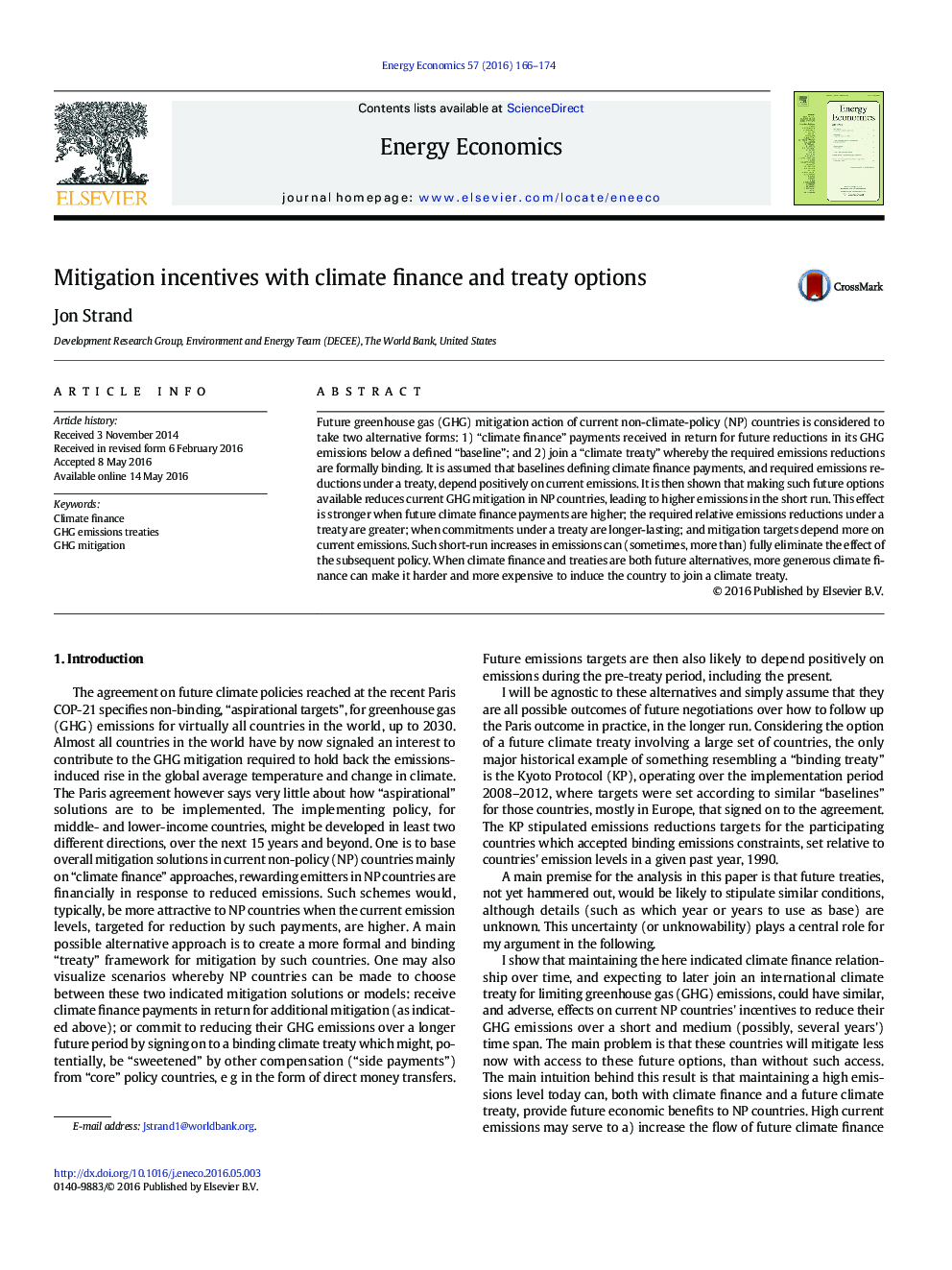| کد مقاله | کد نشریه | سال انتشار | مقاله انگلیسی | نسخه تمام متن |
|---|---|---|---|---|
| 5064125 | 1476707 | 2016 | 9 صفحه PDF | دانلود رایگان |
- A good future climate finance arrangement can increase GHG emissions today.
- The same can be the case with a future and restrictive climate treaty.
- These can be problems when costs under such solutions are reduced by higher emissions today.
- Better climate finance also tends to make joining a climate treaty less attractive.
Future greenhouse gas (GHG) mitigation action of current non-climate-policy (NP) countries is considered to take two alternative forms: 1) “climate finance” payments received in return for future reductions in its GHG emissions below a defined “baseline”; and 2) join a “climate treaty” whereby the required emissions reductions are formally binding. It is assumed that baselines defining climate finance payments, and required emissions reductions under a treaty, depend positively on current emissions. It is then shown that making such future options available reduces current GHG mitigation in NP countries, leading to higher emissions in the short run. This effect is stronger when future climate finance payments are higher; the required relative emissions reductions under a treaty are greater; when commitments under a treaty are longer-lasting; and mitigation targets depend more on current emissions. Such short-run increases in emissions can (sometimes, more than) fully eliminate the effect of the subsequent policy. When climate finance and treaties are both future alternatives, more generous climate finance can make it harder and more expensive to induce the country to join a climate treaty.
Journal: Energy Economics - Volume 57, June 2016, Pages 166-174
